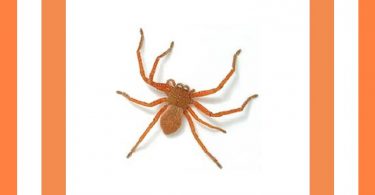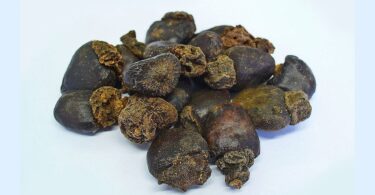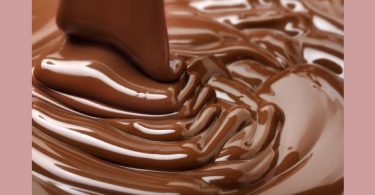Opium (Papavaraceae family)
OPIUM.
This is the Papaver Somniferum and the part used in our materia medica is the concrete milky exudation obtained in Asia Minor by incising the unripe capsules of the white poppy. Opium occurs in irregular lumps or cakes of dark-brown color, sharp, narcotic odor and bitter taste, and yields 9 percent of morphine. Opium contains 28 or 30 alkaloids, the principal ones are morphine, codeine, apomorphine, narceine, thebaine, narcotine and meconine and an acid called meconic acid.
ALLOPATHIC PREPARATIONS AND USES.
It is a drug greatly abused by the allopaths. Take away opium and its preparations, cinchona, iron and mercury and there is very little left in their materia medica. With these well known drugs any examination could be passed in old school materia medica. [ Not true at the present time. ED].
There are many preparations of opium is use in the allopathic school and it is important that every student should know something about them, especially of their doses. It the old school we have:.
1. Opium, crude, the dose of which is 1 grain.
2. Laudanum, which is the tincture of opium, not like our homoeopathic tincture of opium, since it contains other substances, for example phosphate of lime, so it should never be substituted for ours. Its dose is 25 drops.
3. Paregoric which is the camphorated tincture of opium and contains benzoic acid, anis, honey, etc. It really is an elixir of opium. Its dose is up to 2 ounce.
4. Morphine, dose 1/5 of a grain.
5. Morphine sulphate, dose 1/4 of a grain.
6. Vinegar of opium, dose 62 minims.
7. Wine of opium, dose 8 minims.
8. Magendies solution. A favorite way of administering opium or morphine is by hypodermic injections and for this purpose this solution may be used. It is a solution the strength of which equal 16 grains to the ounce, five drops of which equals 1/6 grain of morphine sulphate. It is also called liquor morphinae sulphatis.
9. Codeine, dose 2 to 1 grain.
10. Dovers powders. These are made up of opium, 10 parts, ipecac
10 parts and saccharum lactis 80 parts, and the dose is from 5 to 15 grains.
USES.
The allopathic school uses opium therapeutically:.
1. To relieve pain from any cause except from inflammation of the brain.
2. To produce sleep.
3. To allay irritation.
4. To check excessive secretion as in diarrhoea,diabetes, ptyalism.
5. In inflammation of serous membranes, peritonitis, etc.
Each of the alkaloids of opium has its distinctive action, but the effect of opium is the result of the combination of the forces of these several ingredients. Opium is the form in which its constituents are given us in nature. As a single substance it has been proved on the healthy and tested on the sick. The separate constituents cannot replace opium nor opium replace them.
Hahnemann says of Opium, that its effects are more difficult to appreciate than those of most other medicines, and so subsequent observers have found. Its action is as complex as its composition and it has not been easy to unravel it.
Let us briefly consider its principal alkaloids:.
MORPHINE.
This is generally used in the form of the sulphate. The old school gives it universally for the relief of pain in hypodermic injections, in fact they claim no curative action from it; for instance they give it in colic, saying that it is curative secondarily, by giving the parts rest, quieting the peristaltic actions of the intestines and allowing nature to do the work of cure, a tribute to nature not often paid by that school. Homoeopathically Morphine will do the same, when indicated, or rather it will effect a cure. Among the secondary symptoms of Morphine are extreme susceptibility to pain. The pains are so violent as to threaten convulsions or cause twitchings or jerkings of the limbs. Here Morphine will cure administered homoeopathically in potency. Morphine will produce tympanitis, so do not mistake its effects for peritonitis, as may be done from the extreme sensitiveness and susceptibility to pain and tympanites.
We may use morphine as a palliative in cases of severe pain, intense pain such as the passage of a biliary or renal calculus, but even here let it use be postponed until you have tried such remedies as China and Berberis. Do not give it in every pain which seems severe. Remember that many patients seem oversensitive to pain and the remedy may be Chamomilla instead of morphine. The less of it you use the better for your patients.
CODEINE.
This is similar to morphine but less intense in its action. Homoeopathically it is useful in the dry, teasing and incessant cough of consumptive and it is also useful in twitching of the muscles, especially those of the eyelids.
APOMORPHIA.
Homoeopathically this is a useful remedy in vomiting, especially if it is reflex and of cerebral origin, such as in vomiting of pregnancy and sea sickness. Apomorphia is a very powerful poison and you should remember that even the old school dose of it to produce vomiting is from 1/10 to 1/25 of a grain. The 6x trituration is as low as it should be given.
We have little use for the other preparations of opium. Our endeavors will rather be directed to undo the mischief caused by their indiscriminate use by the allopaths and of these you will have plenty. Nearly all the cough and soothing syrups contain opium in some form and the death rate in children is terribly increased thereby. Mrs. Winslows Soothing Syrup is said to be responsible for the death of 150,000 children annually. Soothing syrups for children are pernicious in more ways than one, they stunt the growth of children, make them irritable and interfere with their brain development. Nux vomica is our remedy to antidote the effects of these anodyne preparation, unless they have been given for some time and their secondary effects have been produced, the patient is wakeful and the pains are unbearable, then give Chamomilla. Now, although it is a deplorable fact that the allopaths greatly abuse opium and its preparations, it is still more to be deplored that there are members of the homoeopathic school who also abuse it. It is to be deplored, not only because it is non-homoeopathic, but because it shows crass ignorance on the part of such physicians of the means of assuaging pains, for opium is not homoeopathic to all kinds of pain, there being many that it will aggravate.
GENERAL ACTION.

It is possibly the sympathetic nervous system which is especially affected by opium. It is depressed. What are the symptoms that result from such depression? There is an apparent antagonism and contradiction between the nerves of the sympathetic and those of the cerebro-spinal system. If we stimulate a sympathetic ganglion the nerves animated by it cause the arteries they supply to contract with consequent coldness, paleness and diminished secretory activity. But if a depressing agent makes its influence first felt in the sympathetic system, the earliest phenomena will be those of apparent stimulation, an increased flow of blood to the sympathetic from the very beginning of its action. The apparent stimulation present during the earlier effects is due to the removal of the restraint exercised on the circulation by the vascular nerves.
In medium doses, one grain, opium arrests all the secretions except the milk and sweat, the latter being increased, the pupils are slightly contracted, the cerebral faculties are stimulated, and sleep follows, full of dreams. In full doses, 3 to 5 grains, we have the same symptoms but in greater intensity, digestion is arrested, and there is nausea, vomiting, profuse diaphoresis, intense pruritus, worse at the nose; spasmodic retention of urine; profound sopor; irregular and slow respiration, with after effects of nauseas; constipation; headache; anorexia; pruritus and foetid secretions.
A toxic dose produces cold, clammy sweat, very slow pulse, stertorous respiration, cyanosed face, contracted pupils, coma and death by paralysis of respiratory center.
The habitual use of opium deranges the system woefully, produces premature decrepitude, impotence, gastric irritability and hallucinations. All opium eaters are chronic liars.
The feeling of strength, therefore, which opium at first produces soon is followed by its main effects, namely, sopor. This is produced by a direct increase of the amount of blood in the brain, this soporific state ranges from a sleepy, drowsy state to complete insensibility. At first the patient can be easily aroused, but as the congestion increases it amounts to compression of the brain and we have the opposite condition to stimulation- a deep sleep, from which the patient cannot be aroused, with snoring breathing and rattling from the vibration of the soft palate which announces impending paralysis of the brain. This relaxed uvula is the first of the paralyzing effects of opium. Not only is the blood increased in its supply to the brain, but its return to the heart is interfered with. Natural sleep as we all know is dependent upon an anaemia, a want of blood in the brain, quite the opposite to the condition produced by opium. It is irrational, therefore, to give opium to produce sleep. It certainly is not a natural sleep, therefore it must be harmful.
These paralyzing effects of opium are followed by a dilatation of the pupils, which do not react to light, showing here also paralysis. The face is dark red, even brownish red, and you will learn that the darker the face the more Opium is indicated homoeopathically. The urine is retained, there is loss of power and the sensibility of the bladder, the sphincters remain closed, the muscular structure of the bladder is weakened and it no longer contracts. On the same principle there is cessation of all action of the bowels, the faecal matter remains, the pulse is full, round and slow, later there are convulsions, loud screaming, the patient foams at the mouth, opisthotonos, distorted face, then snoring with bluish cyanotic face, then rattling from vibrations of the palate, the tetanic rigidity of the muscles and the dark red color of the face. Especially is it indicated in apoplexy of drunkards. It follows Belladonna and is followed by Apis.
DELIRIUM TREMENS. So it is useful in delirium tremens, especially in old sinners where the constitution is destroyed. The face wears the expression of fright or terror, visions of animals are present. The least amount of alcohol makes him worse. The threatened apoplexy of drunkards also suggests its use, with occiput heavy like lead, numbness, free sweat, paralysis of tongue, difficult articulation and swallowing. The stupor, the coma and the stertorous respiration, contracted pupils, slow, feeble respiration, sweaty skin and diminished reflex irritability, the purple face, swollen from the distension of the blood vessels (it may even be of mahogany color, brownish hue), the muscular relaxation-this is the picture of Opium which you must ever bear in mind and possess. It is an easy thing to place this remedy in its proper therapeutical place.
Compare it with:.
Lachesis. Visions of snakes, hideous objects, throat symptoms, choking, spring out of sleep suddenly as if he had a dream.
Stramonium. Symptoms violent, starting from sleep in perfect horror, sees animals in every corner, the face is bright red and he tries to escape.
Cannabis indica. With this remedy there are errors as to time and space, things at the other end of the room seem thousands of miles off and it seems as it it would take days to walk there, a minute seems a thousand years. Patients will say that they have not had any thing to eat for days even five minutes after eating.
Arsenicum. Fear of death and will not be left alone.
Calcarea carb. The minute the eyes are closed vision are seen, compelling them to keep the eyes open.
TYPHOID FEVER and typhoid states, when there is profound congestion resulting from cerebral paralysis, loud stertorous breathing, dropping of the lower jaw, paralysis of the sweat glands, involuntary stools and the perspiring body is burning hot.
Lachesis. Typhoid fever with threatened paralysis of the brain.
CHOLERA INFANTUM. Fatally advancing stupor, pupils sluggish, the disease involves the brain, child appears as if it had been drugged. Opium will restore consciousness, diarrhoea will again set in and the case will develop normally.
COUGH. Opium is an admirable remedy in spasmodic dry cough, especially tormenting at night with scanty expectoration. Never give Opium in cough with profuse expectoration, but in the dry spasmodic, night coughs which prevent sleep. Hoarseness with dry mouth and throat, slow full pulse. Suppuration of the lungs in those addicted to intoxicating liquors, the face is blue during cough.
SKIN. Very troublesome itching all over, redness, skin hot and damp or sweating. Sudden retrocession of acute eruptions, paralysis of the brain setting in, convulsions, nervousness and diarrhoea.
NERVOUS SYMPTOMS. Spasms from fright or after fright of wet nurse, tetanic rigidity ushered in with a loud shriek, foaming at mouth, dark red face and hot sweat. Deep snoring sleep follows.
ABDOMEN AND STOOL. The abdomen is distended but has no power to expel its contents. Constipation, hard, dark brown, small pieces. Inertia of the rectum, no inclination for stool. In these cases gas accumulates in the upper part of the bowels and causes great pain. After abuse of enemas. Valuable in intestinal obstruction with faecal vomiting and violent colic. Intestinal sluggish so that the strongest purgatives lose their power. Opium is especially adapted to the aged and when the inactivity of the bowel is due to cerebral complications. Retention of stools, not so much due to condition or size as to symptoms of intestinal paresis. Constipation with lead colic or the result of pressure of a gravid uterus or abdominal tumor. Absence of expulsive efforts, there is a want of sensibility in the abdominal condition and hardly any inconvenience is felt from it. Constipation of good-humored corpulent women and children.
Bryonia. Constipation with inertia of rectum, stools large and dry.
Plumbum. Stools is hard, black balls with some constriction of rectum.
Alumina. Inertia of rectum, stools soft.
URINE. Retention of urine as a result from fright or following parturition. Expulsive power of the bladder weak. Micturition only after long exertion.
FEVER. Intermittent fever, drowsiness during chill, stupidity as fever comes on, unconsciousness. Puerperal fever from fright. Shaking chill with deep soporous sleep. Complains that the bed is too hot, bed feels so hot he cannot lie on it.
Now and then we meet with patients whose general condition may be characterized as one of torpidity. Inactivity is the characteristic of the whole condition, mental and bodily. Where this cannot be traced to any disease requiring other special treatment, Opium will be found a good energizer and set the wheels of life in action again, it arouses.



